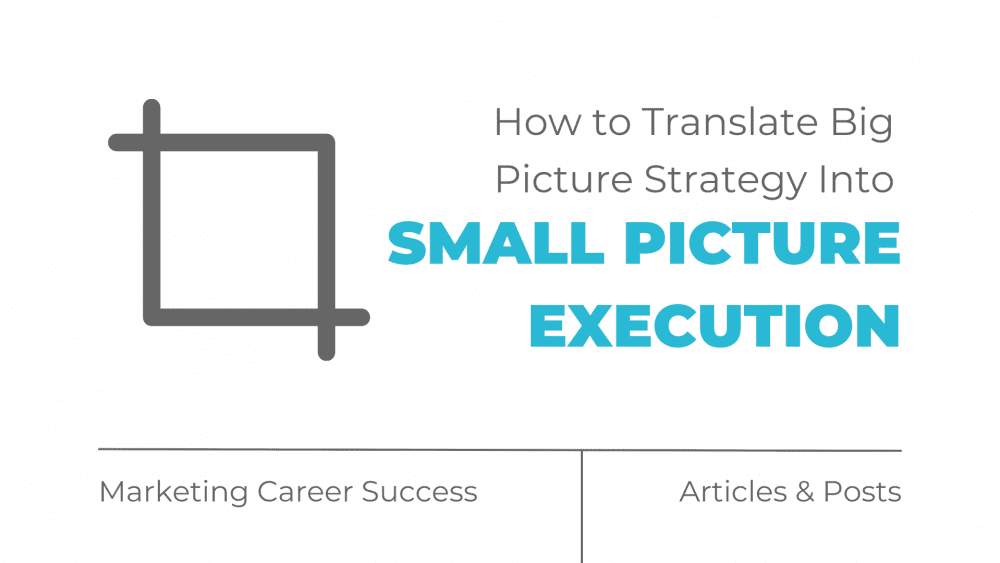Are you feeling overwhelmed by all that is required to bring your marketing strategy from concept to reality?
You’re not alone!
Most marketers have trouble figuring out how to translate big picture strategy into small picture execution.
But the key is to break it down into manageable steps and stay focused on the end goal.
Here are some steps you can take to improve in your marketing.
Make Sure You Know What Your Objectives Are
Understanding your objectives is the first step in this process.
Clearly defining your marketing goals and aligning them with your business objectives allows you to establish a clear direction for your strategy.
Conducting thorough market research to gain insights into your target audience and competitors further informs your approach.
Be SMART About Goals
Setting SMART goals is the next crucial step.
Breaking down your marketing objectives into:
S – specific
M – measurable
A – achievable
R – relevant
T – time-bound goals
Creating a roadmap with clear milestones and deadlines helps you stay on track and measure progress along the way.
SMART Example
Here’s an example of a simple marketing goal broken down using the SMART framework:
Goal: Increase website traffic by 20% within the next three months.
SMART breakdown:
Specific: The goal specifies the desired outcome, which is to increase website traffic.
Measurable: The goal is quantifiable, with a specific target of a 20% increase in website traffic.
Achievable: Based on historical data and industry benchmarks, a 20% increase in website traffic within three months is considered achievable.
Relevant: Increasing website traffic is directly related to the overall marketing objectives and can contribute to lead generation and brand visibility.
Time-bound: The timeframe for achieving this goal is set at three months.
Develop a Comprehensive Strategy
This includes identifying the right marketing channels and crafting messaging that highlights your unique selling propositions.
You need to know that your strategy is likely to reach your target audience and resonates with them.
This step involves careful planning and consideration of resources and budget.
Time to Break it Down
Once the strategy is established, it’s time to create actionable steps.
Breaking down your overarching plan into smaller tasks that can be implemented on a daily, weekly, or monthly basis allows for progress tracking and accountability.
Assigning responsibilities and deadlines to team members ensures that everyone is on the same page and working towards the common goal.
Keep Up and Adjust As Needed
Implementing, monitoring, and adjusting are ongoing processes that require continuous evaluation.
Executing each step according to the defined timeline, regularly monitoring performance using analytics tools, and analyzing the data allows for optimization and improvement.
Collaboration and open communication among team members are crucial for success, as they foster a supportive environment where ideas can be shared and challenges can be addressed.
At the End of the Day
Breaking down big picture marketing strategies into small, actionable steps is a vital component of successful execution.
It enables marketers to tackle ambitious goals in a systematic and organized manner, ensuring that each step is executed effectively and contributes to the overall success of the strategy.
By following this step-by-step guide, you can navigate the complexities of executing a big picture strategy and achieve tangible results.

